Lot details China, 13th-11th century BC. Finely carved in the round as an owl standing on its feet and tail, with the head held high and accentuated with a pair of raised round eyes and sharp hooked beak, further portrayed with a pair of wings curving to the back of the figure. The back of the head is pierced at an angle with two holes connecting to each other. The translucent stone is of a slightly yellowish celadon tone with veins and areas of russet and pale gray and some dark brown specks. Provenance: From the collection of David Taylor and thence by descent within the Taylor family. David Taylor (1876-1958) was a notable British businessman who lived in Belfast and owned various commercial buildings along with a substantial portfolio of stocks and shares. During his travels to China in the early 20th century, he acquired many jades, including the present lot. His grandfather, Sir David Taylor was born in 1815 in Perth, Scotland, and moved to Belfast in 1842, serving as its Mayor in 1867 and for two consecutive terms in 1883 and 1884. Condition: Very good condition commensurate with age. Distinct old wear and weathering, the stone with few natural fissures, some of which may have developed into tiny hairline cracks over time. Minor nicks here and there, some shallow surface scratches. Weight: 42.4 g Dimensions: Height 4.5 cm Depictions of owls feature prominently among the arts of the Shang dynasty. The bird’s nocturnal and binocular vision and its binaural hearing and hunting skill were revered from the Neolithic period, when the earliest jade carvings of owls were made. The owl’s terrifying screech would have fit the perception of abnormality in ritual and magic, and it is most likely that the bird played a significant role in Shang belief. It has been suggested that the mythical black bird (xuanniao) from which the Shang people were believed to have originated was in fact an owl. Alternatively, Sun Xinzhou has suggested that the mythical ancestor Di Jun (also known as Di Ku, Shun) can be identified with the owl deity protector of agriculture (Sun Xinzhou, ‘Chixiao chongbai huaxia lishi wenming’ [On the strigidae worship and historical civilization in China], Journal of Tianjin Normal University (Social Sciences), no. 5, 2004, pp 31-7). Literature comparison: Jade owls were excavated from the Tomb of Fu Hao in modern-day Anyang, Henan province, and illustrated in Tomb of Lady Hao at Yinxu, Beijing, 1980, pl. 137, nos. 1-3, together with a further related beaked bird with horns, pl. 134 no. 3. A related jade owl was included in the exhibition Chinese Jade Animals, Hong Kong Museum of Art, 1996, cat. no. 17. See also two marble owls, excavated from the Shang royal cemetery at Xibeigang, on the northern bank of the Huan river, one of which is illustrated in Cheng Te-K’un, Archaeology in China, vol. 2, Shang China, Cambridge, 1960, pl. Xa. Auction result comparison: Type: Closely related Auction: Christie’s Hong Kong, 30 November 2016, lot 3202 Price: HKD 4,620,000 or approx. EUR 627,000 converted and adjusted for inflation at the time of writing Description: An important and rare celadon jade carving of an owl Expert remark: Compare the related pose, eyes, and wings. Note the different ears and beak. Auction result comparison: Type: Closely related Auction: Sotheby’s Hong Kong, 2 April 2019, lot 3416 Price: HKD 350,000 or approx. EUR 44,500 converted and adjusted for inflation at the time of writing Description: A celadon and russet jade figure of an owl Expert remark: Compare the near identical pose, eyes, beak, and ears, as well as the closely related color of the jade. Note the slightly smaller size (3.5 cm). 晚商重要青玉鴟鴞 中國,公元前十三至十四世紀。青黃色玉,圓雕鴟鴞形,作昂首挺胸矗立狀。翹鼻、額尖和凸角。重環眼,眼珠圓瞪,目光犀利,勾喙回捲為一孔,頸短粗。頭後部有兩個相互連接的孔。前胸飽滿,翅羽收攏,歧尾略翹,腿粗壯,下出一短榫。隨體形佈局的雙線卷雲紋。質地細膩純淨。半透明的玉料帶有天然赤褐色和淺灰色紋理和一些深棕色斑點。 來源:David Taylor收藏,自此一直保存在Taylor家族中。David Taylor (1876-1958) 曾是一位著名的英國商人,住在貝爾法斯特,擁有各種商業建築以及大量股票和股份。二十世紀初,他到中國旅行時購買了許多玉器,包括現在的這件。他的祖父戴維·泰勒爵士 1815 年出生於蘇格蘭
Lot details China, 13th-11th century BC. Finely carved in the round as an owl standing on its feet and tail, with the head held high and accentuated with a pair of raised round eyes and sharp hooked beak, further portrayed with a pair of wings curving to the back of the figure. The back of the head is pierced at an angle with two holes connecting to each other. The translucent stone is of a slightly yellowish celadon tone with veins and areas of russet and pale gray and some dark brown specks. Provenance: From the collection of David Taylor and thence by descent within the Taylor family. David Taylor (1876-1958) was a notable British businessman who lived in Belfast and owned various commercial buildings along with a substantial portfolio of stocks and shares. During his travels to China in the early 20th century, he acquired many jades, including the present lot. His grandfather, Sir David Taylor was born in 1815 in Perth, Scotland, and moved to Belfast in 1842, serving as its Mayor in 1867 and for two consecutive terms in 1883 and 1884. Condition: Very good condition commensurate with age. Distinct old wear and weathering, the stone with few natural fissures, some of which may have developed into tiny hairline cracks over time. Minor nicks here and there, some shallow surface scratches. Weight: 42.4 g Dimensions: Height 4.5 cm Depictions of owls feature prominently among the arts of the Shang dynasty. The bird’s nocturnal and binocular vision and its binaural hearing and hunting skill were revered from the Neolithic period, when the earliest jade carvings of owls were made. The owl’s terrifying screech would have fit the perception of abnormality in ritual and magic, and it is most likely that the bird played a significant role in Shang belief. It has been suggested that the mythical black bird (xuanniao) from which the Shang people were believed to have originated was in fact an owl. Alternatively, Sun Xinzhou has suggested that the mythical ancestor Di Jun (also known as Di Ku, Shun) can be identified with the owl deity protector of agriculture (Sun Xinzhou, ‘Chixiao chongbai huaxia lishi wenming’ [On the strigidae worship and historical civilization in China], Journal of Tianjin Normal University (Social Sciences), no. 5, 2004, pp 31-7). Literature comparison: Jade owls were excavated from the Tomb of Fu Hao in modern-day Anyang, Henan province, and illustrated in Tomb of Lady Hao at Yinxu, Beijing, 1980, pl. 137, nos. 1-3, together with a further related beaked bird with horns, pl. 134 no. 3. A related jade owl was included in the exhibition Chinese Jade Animals, Hong Kong Museum of Art, 1996, cat. no. 17. See also two marble owls, excavated from the Shang royal cemetery at Xibeigang, on the northern bank of the Huan river, one of which is illustrated in Cheng Te-K’un, Archaeology in China, vol. 2, Shang China, Cambridge, 1960, pl. Xa. Auction result comparison: Type: Closely related Auction: Christie’s Hong Kong, 30 November 2016, lot 3202 Price: HKD 4,620,000 or approx. EUR 627,000 converted and adjusted for inflation at the time of writing Description: An important and rare celadon jade carving of an owl Expert remark: Compare the related pose, eyes, and wings. Note the different ears and beak. Auction result comparison: Type: Closely related Auction: Sotheby’s Hong Kong, 2 April 2019, lot 3416 Price: HKD 350,000 or approx. EUR 44,500 converted and adjusted for inflation at the time of writing Description: A celadon and russet jade figure of an owl Expert remark: Compare the near identical pose, eyes, beak, and ears, as well as the closely related color of the jade. Note the slightly smaller size (3.5 cm). 晚商重要青玉鴟鴞 中國,公元前十三至十四世紀。青黃色玉,圓雕鴟鴞形,作昂首挺胸矗立狀。翹鼻、額尖和凸角。重環眼,眼珠圓瞪,目光犀利,勾喙回捲為一孔,頸短粗。頭後部有兩個相互連接的孔。前胸飽滿,翅羽收攏,歧尾略翹,腿粗壯,下出一短榫。隨體形佈局的雙線卷雲紋。質地細膩純淨。半透明的玉料帶有天然赤褐色和淺灰色紋理和一些深棕色斑點。 來源:David Taylor收藏,自此一直保存在Taylor家族中。David Taylor (1876-1958) 曾是一位著名的英國商人,住在貝爾法斯特,擁有各種商業建築以及大量股票和股份。二十世紀初,他到中國旅行時購買了許多玉器,包括現在的這件。他的祖父戴維·泰勒爵士 1815 年出生於蘇格蘭

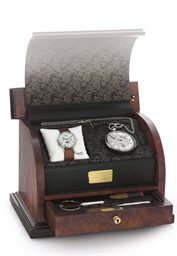
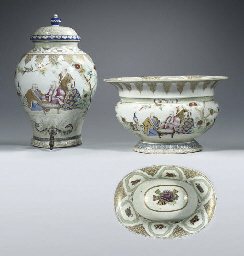
.jpg)
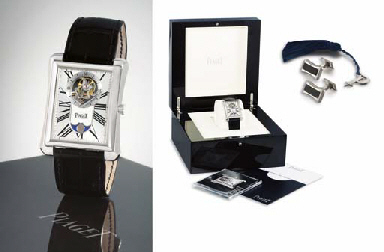
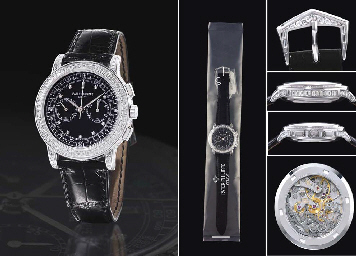
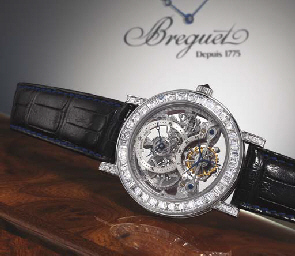
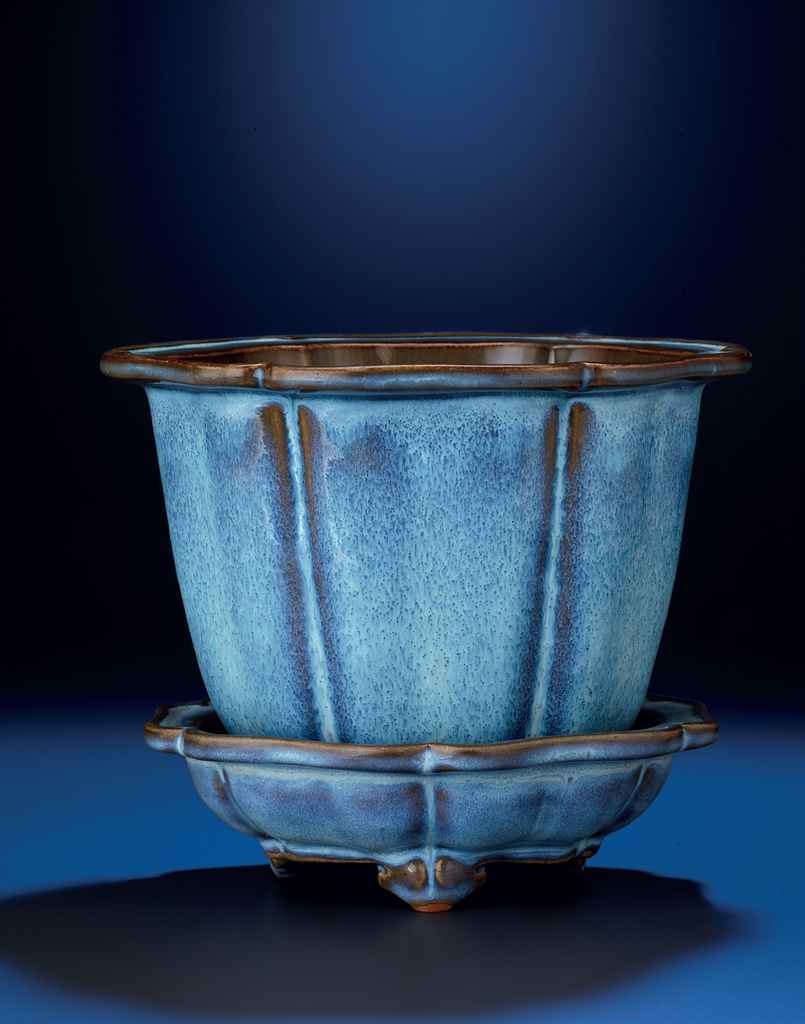
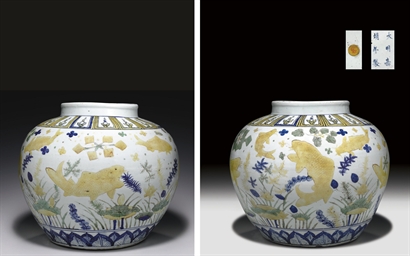
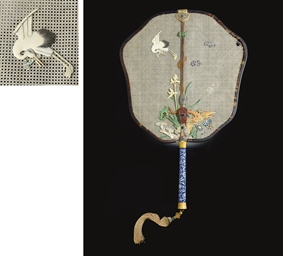

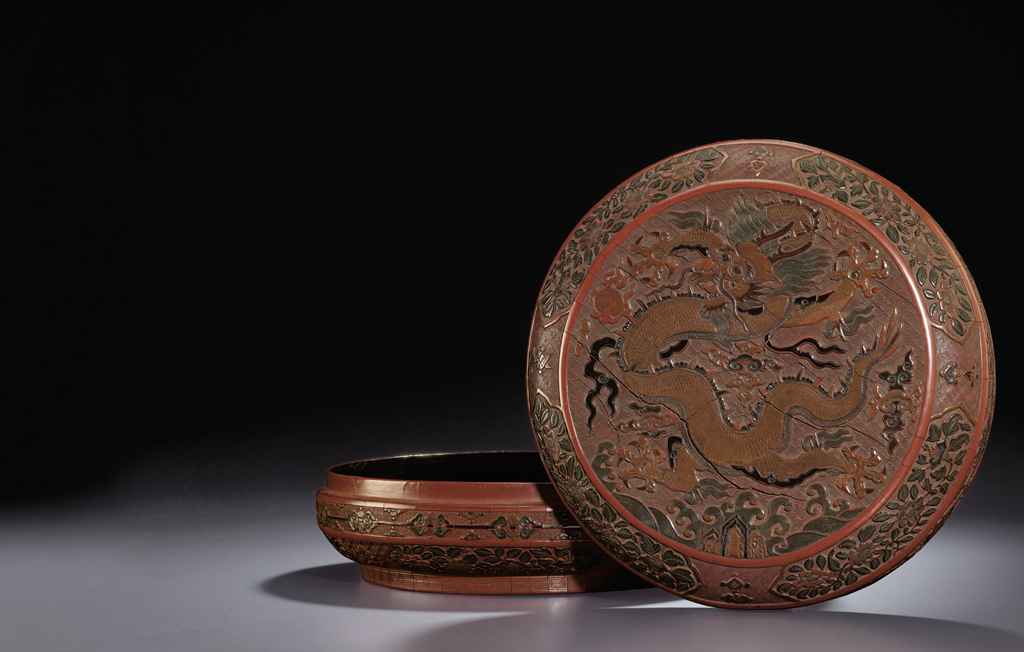
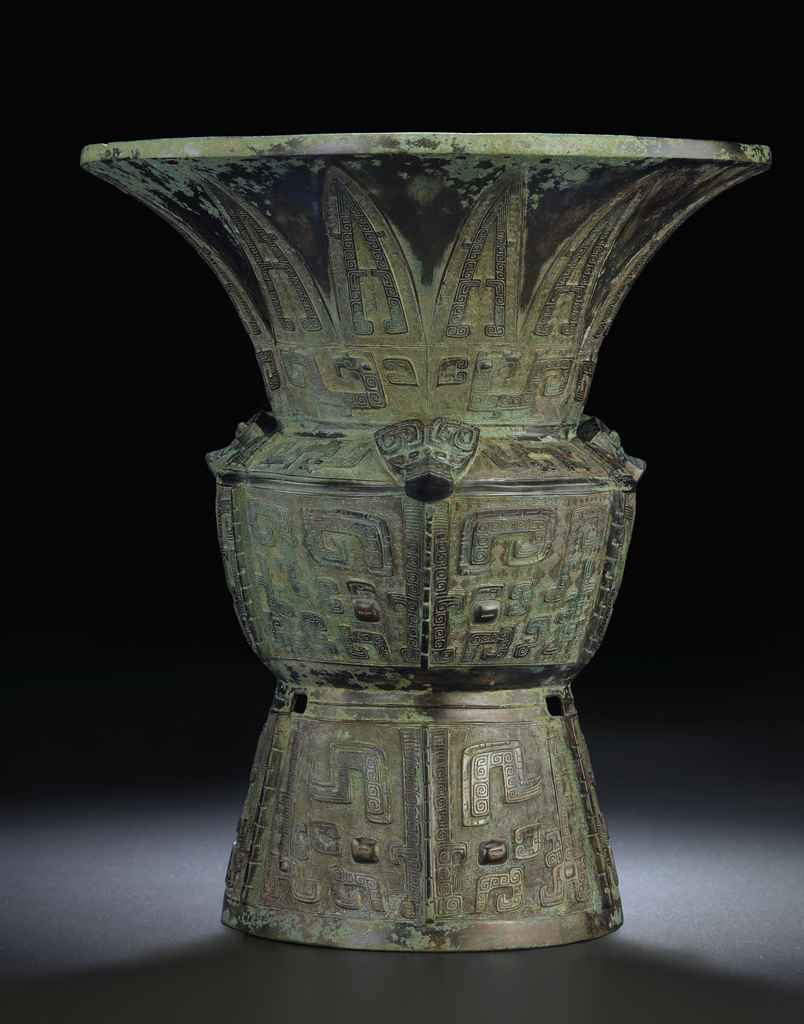


Testen Sie LotSearch und seine Premium-Features 7 Tage - ohne Kosten!
Lassen Sie sich automatisch über neue Objekte in kommenden Auktionen benachrichtigen.
Suchauftrag anlegen